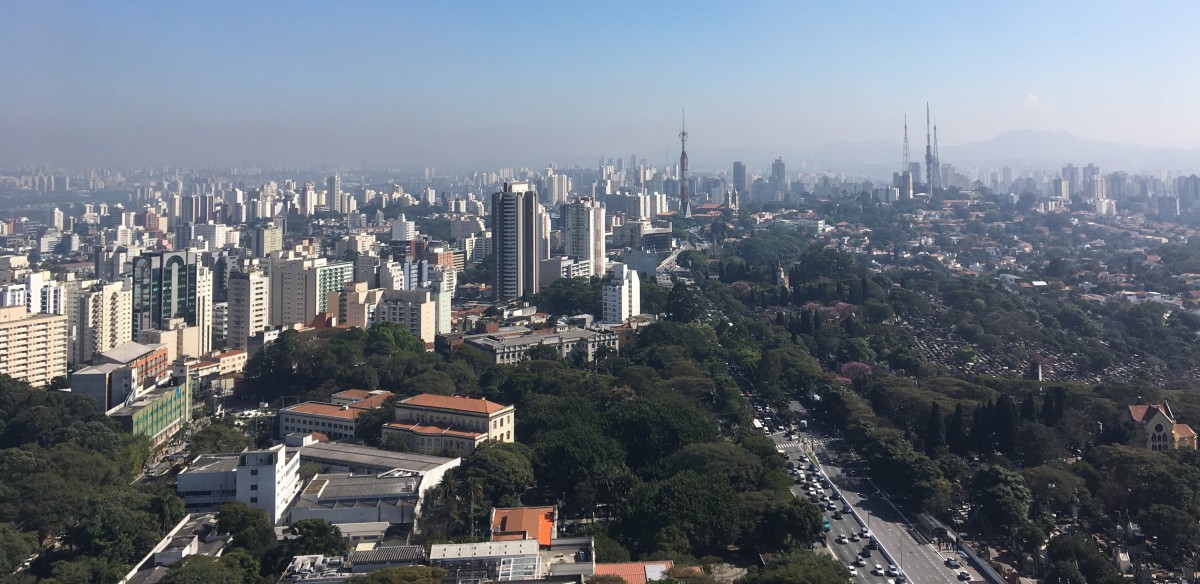This summer, I traveled to Brazil for a course on dermatology at the Faculty of Medicine, Sao Paulo (FMUSP), where I not only received hands-on training on endemic dermatological diseases, but also got the chance to learn about the Brazilian health care system and how telemedicine fits into it.
In one of our first lectures at the university, medical students from 15 different countries and I got a behind-the-scenes look at Brazilian health care, which is offered as a constitutional right. After the military dictatorship ended in 1988, the new government created the Brazilian National Health System (Sistema Único de Saude, or SUS), which is one of the largest public health systems in the world and covers 75 percent of Brazilians. Apart from offering free primary health care, the SUS provides a wide range of hospital services, including heart surgery, sophisticated medical imaging and laboratory diagnostics. It also supports a robust vaccination program, prevention campaigns, basic dental care and 90 percent subsidization of many essential medicines.[1]
To me, this is incredible. Universal health care is an ongoing debate here in America, and one argument that I’ve often heard is that, unlike Canada, the UK or other countries with universal health care, the United States has too large of a population and too much income inequality. Brazil, however, has a comparable population and even more income inequality — Brazil’s population is 211 million compared to the United States’ 326 million, and its Gini is 49.7 compared to the United States’ 45.0. If Brazil can make it work, perhaps we can, too.
The Brazilian health care system is perfect. Competing with the national health system is a vigorous market of private insurers; the remaining 25 percent of the population is enrolled in these private health plans (with concurrent access to the public system).1 This mix of financing makes the Brazilian health care system extremely unequal, and contributes to large health care inequalities. This is where telemedicine comes in.
In the United States, many hospitals and universities are leveraging telemedicine to increase access to medical care and improve outcomes. However, in Brazil, individual organizations are specifically incentivized to incorporate telemedicine into their practice by two specific national-level public initiatives established by the government-funded national health care system: The Brazilian National Telehealth Network and the Telemedicine University Network. One of my professors at FMUSP, Dr. Tatiana Gabbi, shared with us the results of a retrospective study that was performed on The Telehealth Network of Minas Gerais (TNMG), a public telehealth service supporting 77 percent of the primary care practitioners in the southeast state of Minas Gerais. That study found an inverse relationship between the number of inhabitants in a municipality and the use of the service, and that municipalities with fewer than 5,000 inhabitants were the ones that sent the highest number of teleconsultations. In another study, researchers found that, on average, 80 percent of the telehealth consultations avoided patient referrals, generating approximately R$80 million for the public health system in eight years of operation, proving the economic viability of the practice. The public health major in me can’t help but see these numbers and get excited about the promise of telemedicine in rural America where, just like Brazil, long distances and provider shortages are a barrier to care.
References
[1] Aith, Fernando. “The Brazilian Health System.” Faculty of Medicine, Sao Paulo Winter Schools Program, July 3, 2017. Faculty of Medicine, Sao Paulo, SP, Brazil. Opening Lecture.
